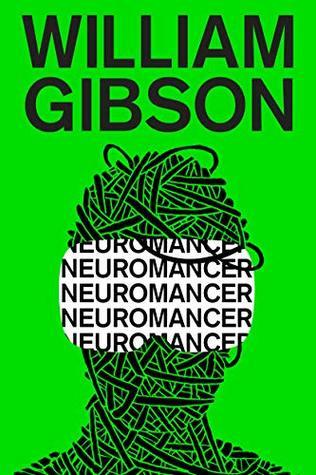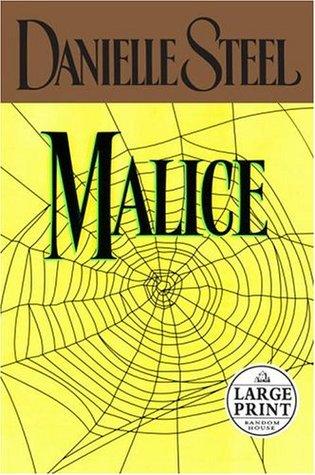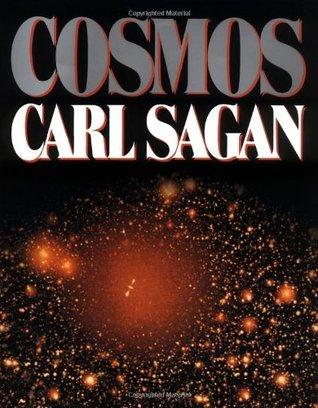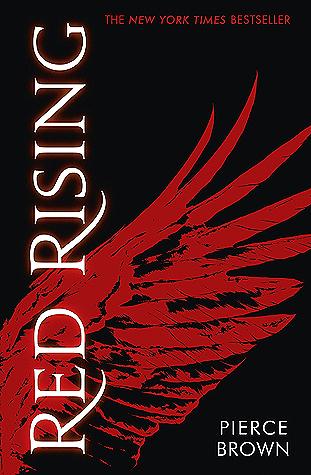Neuromancer by William Gibson Book Summary
Explore the world of "Neuromancer" by William Gibson in this comprehensive article. Discover a detailed book summary, key insights, and an in-depth review that unravels the groundbreaking themes and characters of this cyberpunk classic. Dive into the future of technology and its implications on society today!
Neuromancer Book Summary
William Gibson's groundbreaking cyberpunk novel Neuromancer revolutionized science fiction by introducing readers to a dark, digital future where hackers navigate virtual reality and artificial intelligence reigns supreme. Published in 1984, this prescient work predicted many aspects of our modern internet age while exploring themes of technology, consciousness, and human identity. The story follows Case, a washed-up computer hacker who gets pulled into a dangerous heist involving powerful AIs in cyberspace. Gibson's visionary narrative not only coined the term "cyberspace" but also established the cyberpunk genre, making it essential reading for understanding both dystopian fiction and our digital future.
Enhance your reading journey with our detailed The Notebook Book Summary, Review & Key Insights. Discover key themes and unforgettable moments that deepen your understanding and appreciation.
Neuromancer by William Gibson - Introduction
I had no idea that a book written back in the '80s could feel so shockingly relevant today. When I started Neuromancer by William Gibson, I thought I was just diving into some classic sci-fi cyberpunk tale—something heavy on tech jargon and neon-lit streets. But what really surprised me was how Gibson made me rethink the way we interact with technology and identity itself. The idea that our consciousness could be hacked or that virtual reality could be as real as the physical world? It’s wild, and honestly a little unsettling.
I picked up this book because I’ve always been curious about science fiction that blends with dystopia and speculative fiction, and I’d heard it was a foundational work in cyberpunk. Plus, at just 292 pages, it seemed manageable for a weekend read or an audiobook session during my commute.
If you’re someone who loves stories that challenge how you see the future—or even the present—you’ll get a lot out of this. It’s perfect for fans of science fiction fantasy, novels that mix gritty reality with mind-bending concepts, or anyone intrigued by how technology shapes human experience.
And honestly, if you enjoy audiobooks, this one’s a solid pick to listen to; it takes about 8-10 hours, depending on your pace. It’s not just a story; it’s a deep dive into a world where the line between human and machine blurs in ways you probably haven’t imagined before. Give it a shot—you might find yourself thinking differently about your phone or the internet afterward.
What is Neuromancer About?

Neuromancer by William Gibson is a groundbreaking science fiction novel that follows a washed-up computer hacker named Case who is hired for a final job that involves navigating a digital landscape known as cyberspace. The main message of the book revolves around the intersection of technology and humanity, exploring themes of identity and consciousness in a rapidly advancing digital world. Key concepts include the rise of artificial intelligence, the blurring lines between reality and virtual reality, and the implications of cybernetics on human existence.
About Book Author - William Gibson
William Gibson
It's a real pleasure to introduce someone whose imagination helped define a genre. William Gibson didn't start out as someone synonymous with our digital frontiers. What's interesting about William Gibson is his journey to Neuromancer. He was an observer, absorbing the undercurrents of a rapidly changing world in the late 70s and early 80s. This sense of a gritty, emergent future, rather than a deep technical background, fueled his vision for what would become a cornerstone of cyberpunk.
- A fascinating tidbit: he actually wrote Neuromancer on a 1927 Hermes portable typewriter, initially having little direct experience with the computers he was so vividly imagining.
He possesses an uncanny ability to synthesize disparate cultural and technological threads, to see the human element within the machine. It wasn't just about predicting cyberspace; it was about how we would live, feel, and connect within it. This foresight continued to unfold in later works like Pattern Recognition and Idoru, showing his enduring grasp on our evolving relationship with technology. He’s uniquely qualified because he felt the future before many of us even saw its outline.
More Books To Find
Neuromancer - Book Overview
Neuromancer is essentially about a washed-up computer hacker named Case who gets pulled back into the digital underworld to pull off a heist. Think of it like a cyberpunk heist movie where the stakes are high, and the world is a blend of virtual reality and gritty street life.
William Gibson wrote it to explore the implications of technology on human identity and society. It’s not just a sci-fi story; it’s a cautionary tale about how we might lose ourselves in tech and the blurred lines between reality and virtual existence.
What sets it apart from other books is its visionary world-building. Gibson invented terms like "cyberspace" before the internet was even a thing, and his depiction of a networked reality feels eerily prescient today.
One story element that really stuck with me is the concept of "the matrix"—not the movie, but the way Gibson describes a digital landscape where the mind can roam free. There's a scene where Case jacks into cyberspace, and it feels like he’s flying through a digital ocean, which is both exhilarating and terrifying. It captures that sense of freedom and danger that comes with technology, making you think about how far we’re willing to go for a taste of that digital thrill.
Key Insights of Neuromancer
Cyberpunk Aesthetic: Neuromancer is a cornerstone of the cyberpunk genre, blending high-tech with low-life. It presents a dystopian future where advanced technology coexists with societal decay, emphasizing the stark contrast between the privileged and the disenfranchised.
Artificial Intelligence: The novel explores the theme of AI consciousness through characters like Wintermute and Neuromancer. These AIs challenge the boundaries of intelligence and autonomy, raising questions about the nature of sentience and the ethical implications of creating life.
Simulated Reality: Gibson introduces the concept of cyberspace, a virtual reality that allows characters to navigate and manipulate data. This digital landscape reflects the book’s exploration of identity and perception, as characters often struggle to distinguish between reality and simulation.
Corporate Control: The pervasive influence of mega-corporations highlights the theme of capitalism and its impact on humanity. Characters like Case are often trapped in a system that prioritizes profit over individual well-being, illustrating the loss of personal agency in a corporate-dominated world.
Human Connection: Despite the technological advancements, Neuromancer underscores the importance of human relationships. The connections between characters, such as Case and Molly, reveal the need for intimacy and trust in a world increasingly defined by isolation and digital interactions.
Who Should Read This Book
"Neuromancer" by William Gibson is a must-read for science fiction enthusiasts, particularly those intrigued by cyberpunk themes. It appeals to tech-savvy readers who are fascinated by the implications of artificial intelligence, virtual reality, and the digital landscape. Additionally, fans of dystopian narratives and complex characters will find themselves captivated by the book’s rich world-building and philosophical undertones. Writers and creatives seeking inspiration for futuristic storytelling will also benefit from Gibson's innovative narrative style. Ultimately, anyone curious about the intersection of technology and humanity will find "Neuromancer" a compelling exploration of our future.
Read If You Are
- a fan of cyberpunk and speculative fiction
- interested in the intersection of technology and society
- seeking to explore themes of artificial intelligence and virtual reality
Skip If You Are
- not interested in science fiction or speculative fiction genres
- looking for a straightforward, linear narrative
- uncomfortable with complex themes and cyberpunk aesthetics
Important Takeaways from this Book
-
Embrace a Digital Mindset: Start viewing technology as an extension of yourself. Spend 10 minutes daily exploring new tech tools or apps that can enhance your productivity. This mindset shift fosters innovation and adaptability, crucial in our rapidly evolving world. Consider your current tech usage and identify areas for improvement.
-
Cultivate a Strong Network: Reach out to three people in your industry this week for a virtual coffee chat. Building relationships can lead to unexpected opportunities and insights. Ensure you have thoughtful questions ready to maximize the conversation's value.
-
Practice Visualization: Dedicate 5 minutes each day to visualize your goals vividly. Picture yourself achieving them, including the steps you'll take. This technique enhances motivation and clarity, making your goals feel more attainable. Keep a journal to track your visualizations and progress.
-
Explore Cybersecurity Basics: Spend an hour today learning about basic cybersecurity practices, such as creating strong passwords and recognizing phishing attempts. Protecting your digital presence is essential in today’s connected world. Consider using a password manager to enhance your security.
-
Experiment with Creative Expression: Set aside 30 minutes this week to engage in a creative activity—writing, drawing, or coding. This practice can boost problem-solving skills and enhance your cognitive flexibility. Choose a medium you’re curious about, and let your imagination flow without judgment.
Book Review
I picked up "Neuromancer" by William Gibson expecting a fast-paced sci-fi thriller that would immerse me in a high-tech world, and while it certainly delivered on atmosphere, it was a different kind of ride than I anticipated.
Gibson’s writing style is both poetic and dense, which I found captivating but occasionally overwhelming. The vivid imagery he creates, especially in scenes like Case’s journey through cyberspace, is a definite strength. It’s as if you can feel the electric hum of the digital world. The characters, particularly Case and Molly, are complex and memorable, showcasing a gritty realism that adds depth to their cybernetic adventures.
However, the pacing sometimes falters. There are sections where the narrative slows down significantly, making it a challenge to stay engaged. I found myself wishing for more straightforward explanations, as some of the tech jargon felt daunting without context. For instance, the early chapters are packed with concepts that, while fascinating, can leave readers feeling lost.
In comparison to other cyberpunk novels I've read, like "Snow Crash" by Neal Stephenson, "Neuromancer" is more philosophical and less action-driven, which might not appeal to everyone. If you’re looking for a traditional plot with a clear trajectory, this might not be your cup of tea.
Overall, I appreciated "Neuromancer" for its groundbreaking ideas and rich world-building, but I’d recommend it to readers who enjoy a more contemplative approach to sci-fi. If you prefer fast-paced narratives with clear-cut explanations, you might want to start elsewhere.
Final Thoughts
If I'm being honest, finishing Neuromancer left me with a profound sense of intrigue and a bit of existential questioning. The world Gibson creates is incredibly rich, blending technology and humanity in a way that feels eerily prescient. My overall takeaway is that it’s not just a cyberpunk story; it’s a reflection on our relationship with technology and identity.
I'd definitely recommend this if you're into sci-fi, especially if you appreciate stories that challenge your perception of reality. However, skip this one if you're looking for straightforward narratives or happy endings. The thing that surprised me most was how relevant the themes still feel today, especially with our current tech landscape.
One thing that will stick with me months from now is the concept of the matrix—not just as a digital realm but as a metaphor for our interconnected lives. I would consider reading it again, but I think I'd recommend the full book over a summary. There's so much depth in Gibson's writing that a summary just won't do it justice.
Overall, my reading experience was a journey through a mind-bending world, and I’m glad I took the plunge. It’s a book that lingers long after you turn the last page.
Frequently Asked Questions
How long does it take to read Neuromancer?
The average reading speed is about 300 words per minute. With "Neuromancer" at 292 pages, it typically takes around 8-10 hours to read, depending on your pace and comprehension. Enjoy the journey into cyberspace!
What makes "Neuromancer" different from other books in this genre?
Neuromancer stands out for its groundbreaking exploration of cyberspace and artificial intelligence, blending noir elements with a prophetic vision of the digital future. Gibson's intricate prose and richly developed world create a unique atmosphere, influencing the cyberpunk genre and shaping modern sci-fi literature.
Who is the target audience for Neuromancer
The target audience for "Neuromancer" includes science fiction enthusiasts, tech-savvy readers, and those interested in cyberpunk culture. It appeals to individuals fascinated by themes of artificial intelligence, virtual reality, and dystopian futures, often resonating with young adults and professionals in technology and creative fields.
Are there any criticisms or limitations of Neuromancer
Critics often point to Neuromancer's dense prose and complex narrative structure as potential barriers for readers. Some argue its portrayal of technology and AI is dated, while others feel the character development is lacking, making it difficult to connect emotionally with the protagonists.
What is the main theme of Neuromancer by William Gibson
The main theme of "Neuromancer" revolves around the intersection of technology and humanity, exploring concepts of artificial intelligence, cyberspace, and the impact of digital culture on identity and society. It delves into the consequences of a hyper-connected world, highlighting the struggle for control and the nature of consciousness.
Tags:
Neuromancer, Neuromancer Author, Neuromancer Book, Neuromancer Book Description, Neuromancer Book Rating, Neuromancer Book Review, Neuromancer by William Gibson, Neuromancer ISBN, Neuromancer Short Summary, William Gibson

Michel Fisher
Michel Fisher is a passionate fiction enthusiast and book blogger who writes about emotional reads, character-driven stories, and contemporary romance authors that captivate hearts and minds.

Neuromancer
Book Overview
Description
Hotwired to the leading edges of art and technology, Neuromancer is a cyberpunk, science fiction masterpiece—a classic that ranks with 1984 and Brave New World as one of the twentieth century’s most potent visions of the future.The Matrix is a world within the world, a global consensus-hallucination, the representation of every byte of data in cyberspace...Henry Dorsett Case was the sharpest data-thief in the business, until vengeful former employees crippled his nervous system. But now a new and very mysterious employer recruits him for a last-chance run. The target: an unthinkably powerful artificial intelligence orbiting Earth in service of the sinister Tessier-Ashpool business clan. With a dead man riding shotgun and Molly, mirror-eyed street-samurai, to watch his back, Case embarks on an adventure that ups the ante on an entire genre of fiction.The winner of the Hugo, Nebula, and Philip K. Dick Awards, Neuromancer was the first fully-realized glimpse of humankind’s digital future—a shocking vision that has challenged our assumptions about our technology and ourselves, reinvented the way we speak and think, and forever altered the landscape of our imaginations.
Key Points
Cyberpunk genre pioneer
Characters
Armitage, Lady 3Jane Marie-France Tessier-Ashpool, Henry Dorsett Case, Wintermute, The Dixie Flatline, Molly Millions
Publisher
Ace
First Publish Date
07/28/84
Awards
Hugo Award for Best Novel (1985), Nebula Award for Best Novel (1984), Locus Award Nominee for Best First Novel and Best SF Novel (1985), British Science Fiction Association Award Nominee for Best Novel (1984), Philip K. Dick Award (1985), John W. Campbell Memorial Award Nominee (1985), Ditmar Award for Best International Long Fiction (1985), SF Chronicle Award for Novel (1985), Tähtivaeltaja Award (1992), Prix Aurora Award Nominee (1985), Seiun Award 星雲賞 for Best Translated Long Story (1987)





